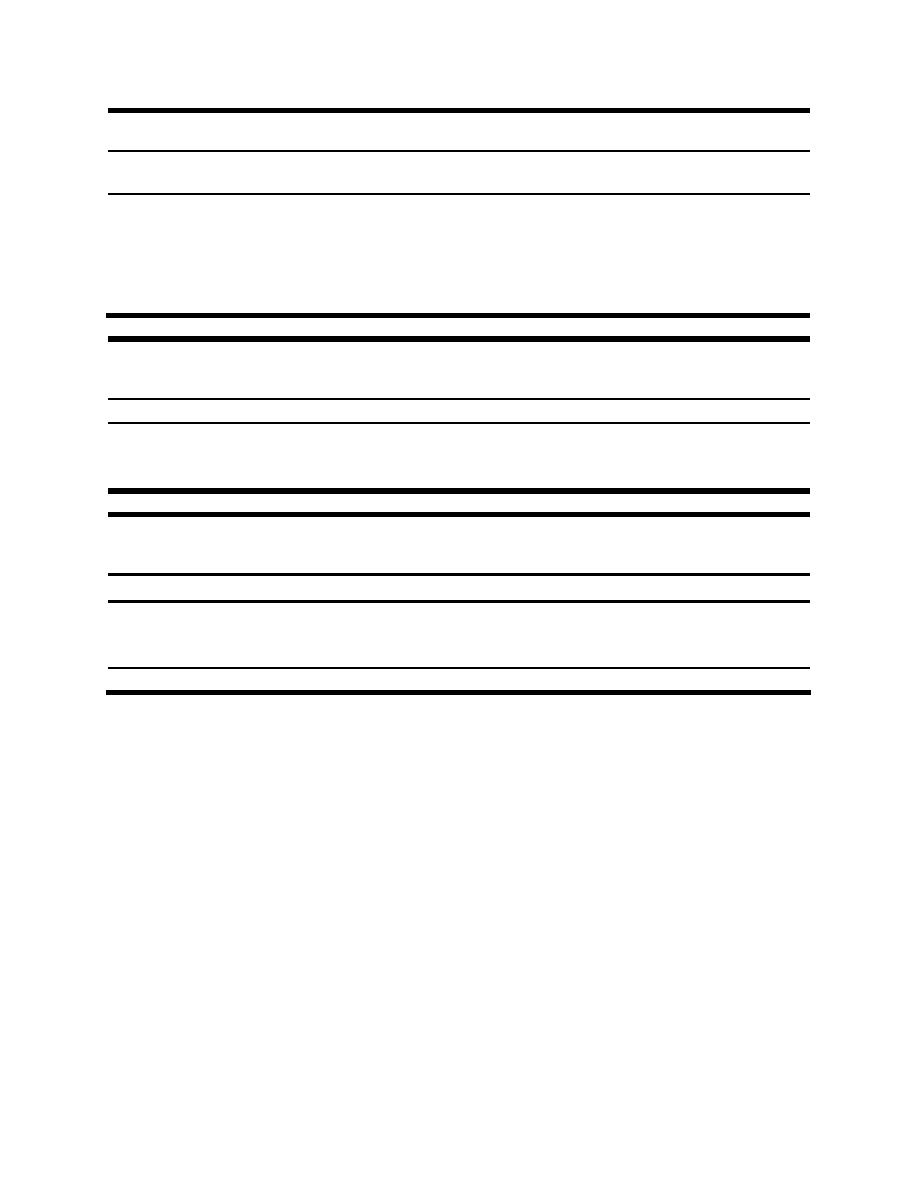
ETL 1110-2-563
30 Sep 04
Table C-4
Summary of Model Experiments for Marmet Lock and Dam (Patev 2000)
Flow Conditions,
cu m/sec
Number of Model
(cu ft/sec)
Runs
Number of Barges
Controlled
Loss of Power
Walls Affected
708 (25,000)
25
9 (jumbos)
Yes
No
Guide wall
708 (25,000)
25
5 (standards)
Yes
No
Guard wall
Guard wall/
1,416 (50,000)
25
9 (jumbos)
No
Yes
Guide wall
3,002 (106,000)
25
9 (jumbos)
Yes
No
Guide wall
3,540 (125,000)
25
9 (jumbos)
No
Yes
Guard wall
Table C-5
Example Lognormal Distribution Parameters for Impact Variables at Marmet L&D Upper
Guide Wall (Patev 2000)
Design Structure
Variable
Mean
Standard Deviation
Minimum
Maximum
Upper guide wall
Vt , ft/sec
0.94
0.4
0
5
(708 cu m/sec
Vn, ft/sec
0.13
0.065
0
1
(25,000 cu ft/sec)
5-barge)
θ, deg
6.92
1.47
0
20
Table C-6
Example Correlation Coefficient Matrix of Distribution Parameters at Marmet L&D Upper
Guide Wall (Patev 2000)
θ, deg
Design Structure
Variable
Vt , ft/sec
Vn , ft/sec
Vt , ft/sec
-
0.6
0.08
Upper guide wall
(708 cu m/sec
Vn, ft/sec
0.6
-
0.68
(25,000 cu ft/sec)
5-barge)
θ, deg
0.08
0.68
-
Note: Correlation values ranges from 1 (negative) to 1 (positive).
e. London Locks Upstream Guard Wall on the Kanawha River, West Virginia (Design
Memorandum, London Locks Upstream Guard Wall, Huntington District, 1999).
(1) The London Locks and Dam upstream guard wall is on the Kanawha River at London, West
Virginia. The structure consists of five concrete-filled sheet-pile cells spaced at 32 m (105-ft) center to
center and a concrete-filled sheet-pile nose cell, which support five precast concrete beams. Each sheet-
pile cell is constructed with a thrust block to transfer the barge impact from the beam into the cell. The
hollow, rectangular precast wall beams are each 32 m (105 ft) long, and have an outside dimension of 3 m
by 2 m (10 ft by 8 ft) high. The weight of each of the precast beams is approximately 308,443 kg
(340 tons).
(2) A 1:120-scale navigation model was developed for the London Locks project at ERDC. The flow
vectors from the scale model are shown in Figure C-19. A limited number of scale model experiments
under controlled events were performed to assist with determining the distributions for approach angles or
forward velocities to be used in the impact design. These distributions for forward velocity and impact
angle from the model testing are shown in Figures C-20 and C-21, respectively. Table C-7 shows the
statistical parameters used in the design of the upper river guide wall.
C-13


 Previous Page
Previous Page
